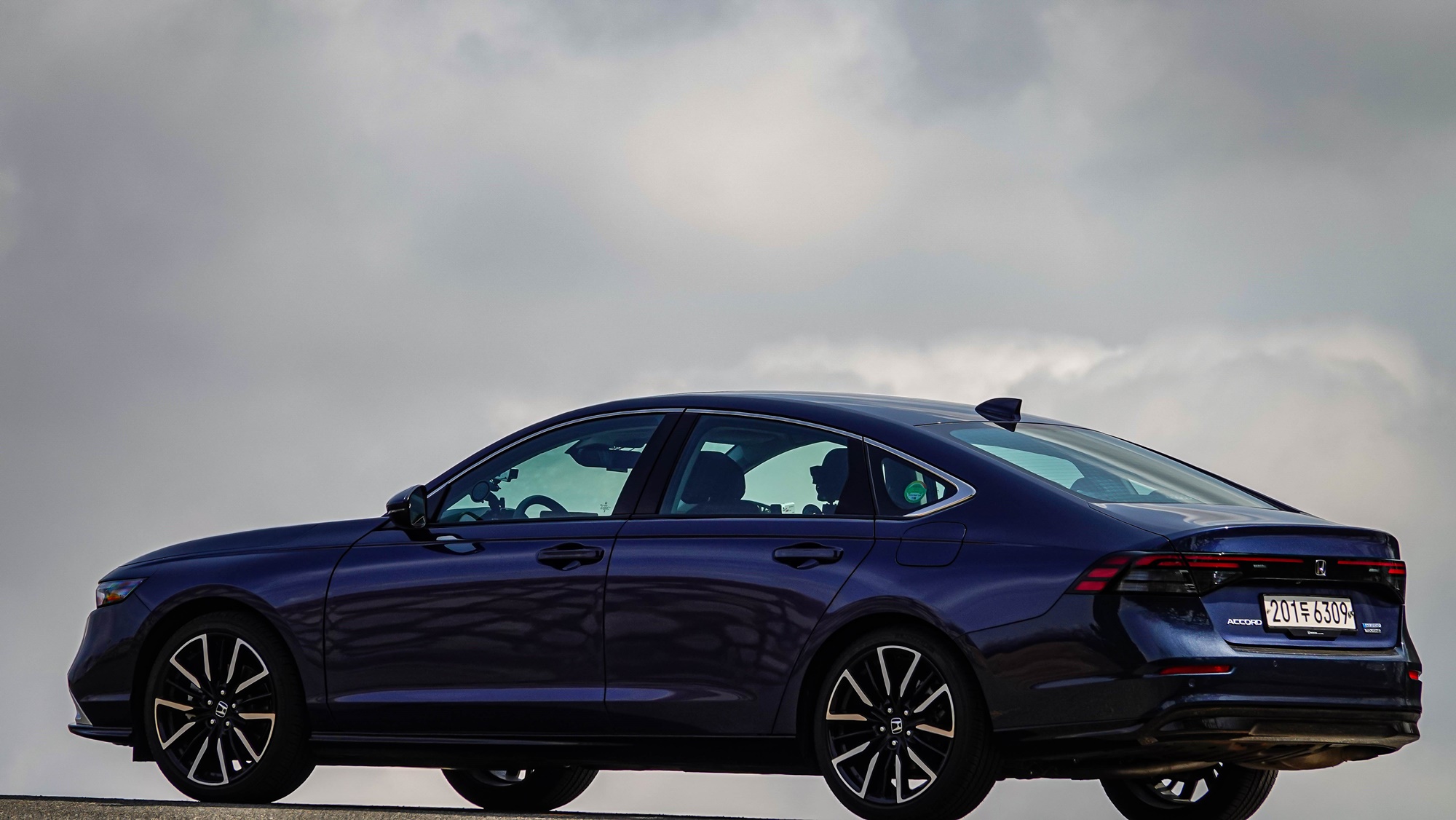
This is the Honda Accord Hybrid once again.
With a 50-year history, Honda’s flagship model has now reached its 11th generation. Meeting a vehicle made in the U.S. by a Japanese brand in South Korea embodies a global collaboration of Korea, the U.S., and Japan.
The headlamps and rear lamps are fully LED. The thin lines radiate light, creating an impressive aura that fills the darkness. To truly appreciate its style, you must view it from the side. It boasts a fastback design. The roofline descends from the peak above the driver’s seat, distinguishing it from usual sedans. The incline of the roofline might raise concerns about rear seat space, but those worries are unfounded. Sitting in the back seat reveals ample space and comfort.
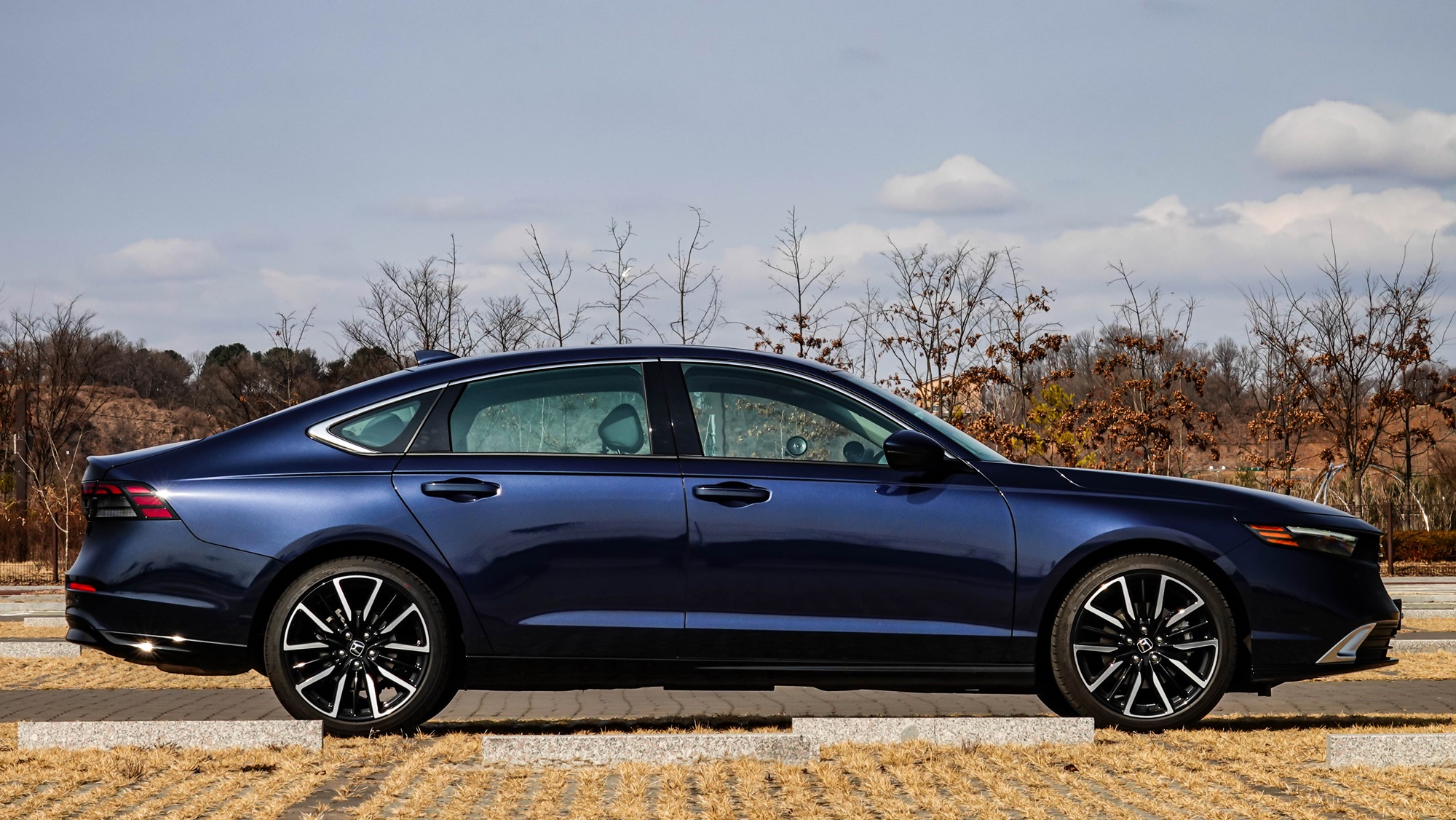
Dimensions: 4,970 × 1,860 × 1,450mm. It’s grown by an impressive 65mm. At 4,970mm, it can simply be regarded as a 5-meter car. It is 90mm longer than its competitor, the Toyota Camry Hybrid. Increasing the length provides more space, while maintaining an appropriate width aids in navigating tight parking spaces, and a lower height enhances driving stability. It’s a clever size.
As you sink into the driver’s seat, the car doesn’t feel particularly low. It gives a sensation similar to that of an average sedan, but there’s a moment of reality check. When you open the window to grab a highway toll card and place your foot outside the vehicle, the ground feels alarmingly close. The car does seem lower than expected.
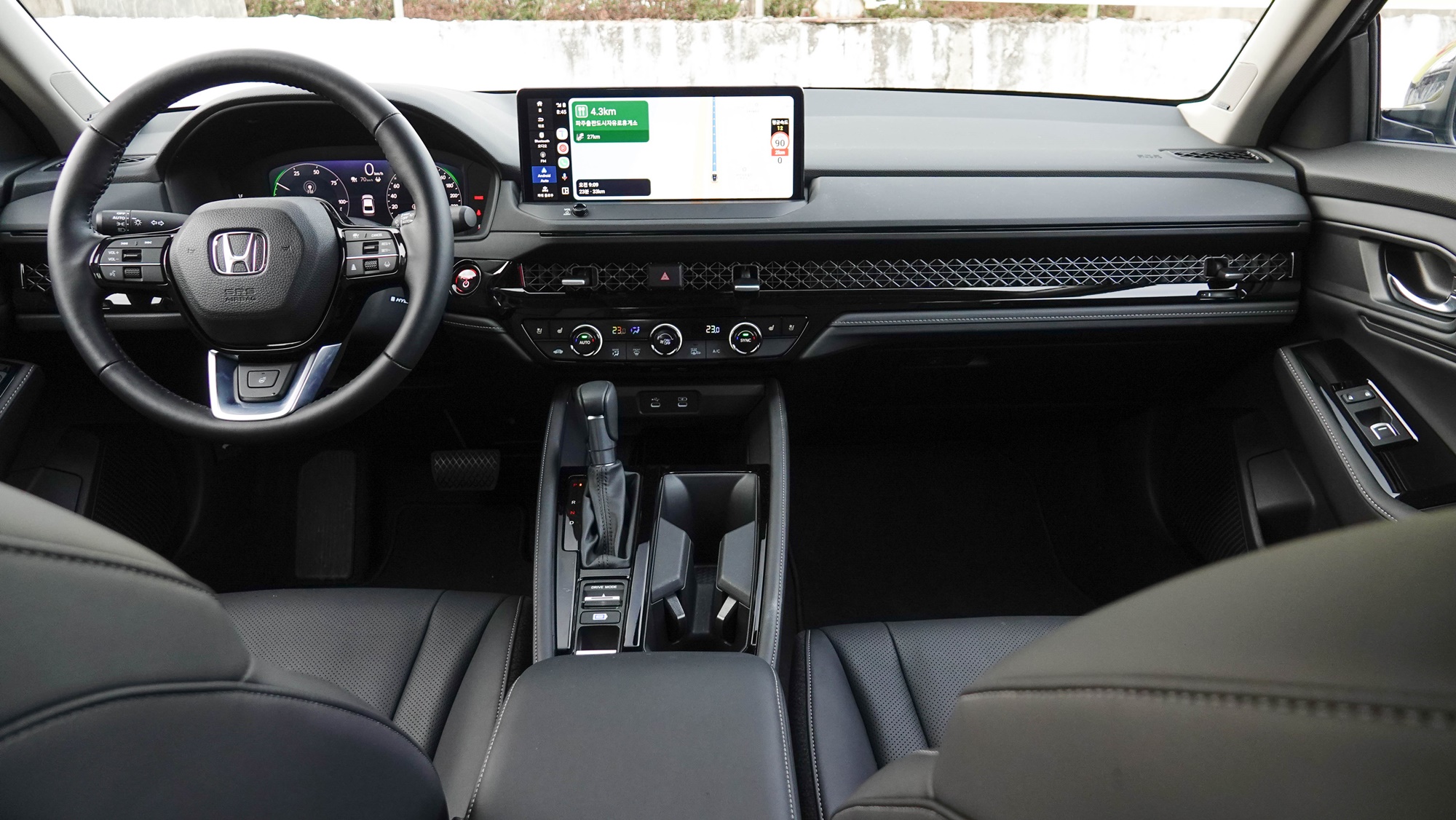
The interior is modest. It opts for a format that subtly yet definitively conveys information rather than flamboyantly displaying it. The illumination of the instrument panel and center fascia monitor reflects this. The head-up display transmits information in a single color.
Though it features a hybrid system, it operates differently from traditional hybrids. While typical hybrids rely on the engine as the primary power source, with the motor serving as supplemental power, Honda prioritizes the motor as the primary source. The engine acts primarily as a backup. It is what they call a 2-motor hybrid system.
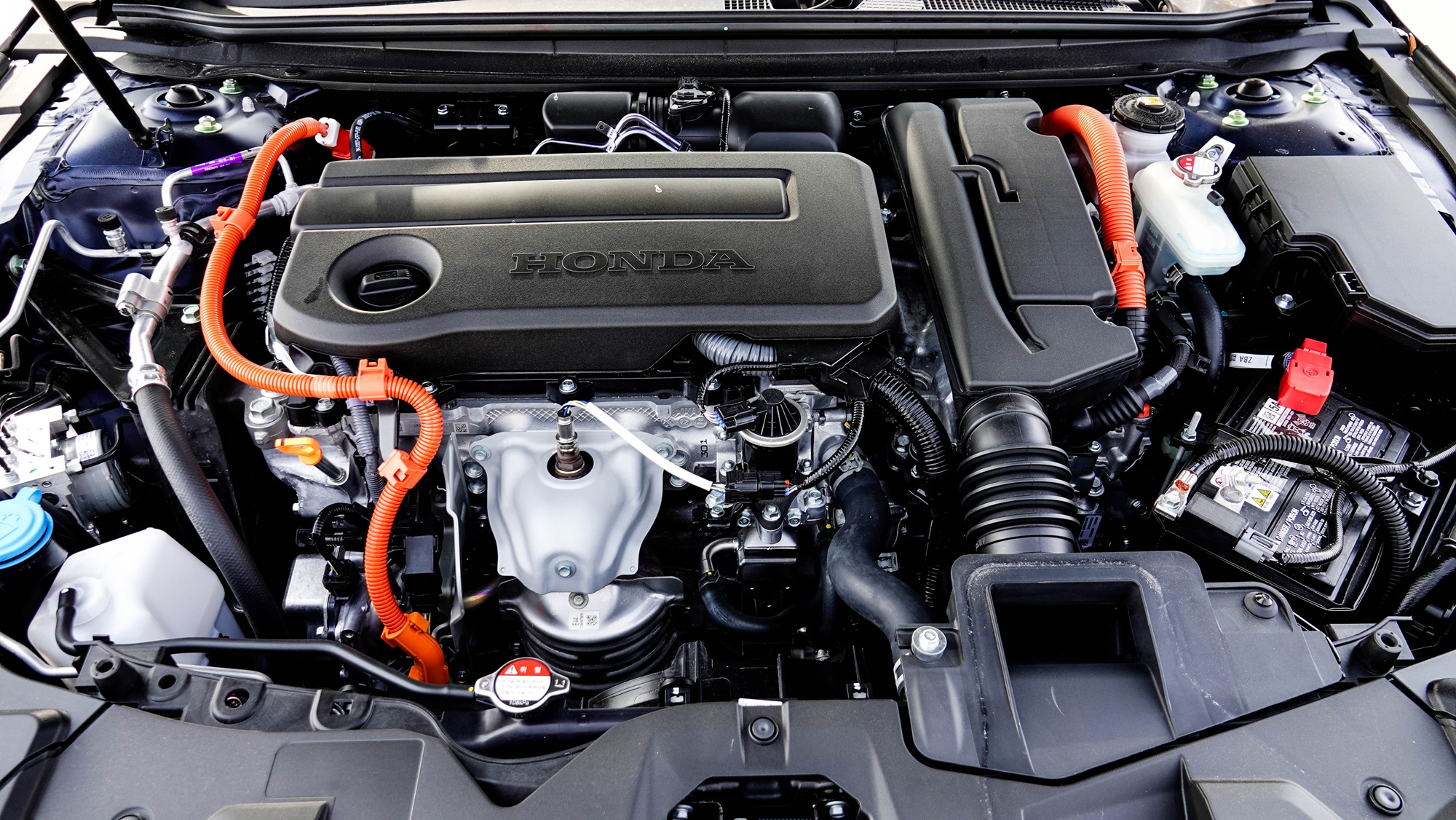
It employs a 2.0L direct injection Atkinson engine and e-CVT. The engine produces 147 horsepower, while the motor delivers 184 horsepower. When you press the start button, the motor responds first. The engine remains inactive. Even at low speeds, it’s the motor that takes precedence. Much like a lazy child, the engine is slow to respond.
However, there are times when that engine springs into action. That’s during sports mode. It revs up with assertive sounds, clearly announcing its presence. The response is sluggish in eco mode, while it becomes more agile in sports mode. The motor and engine work in harmony to provide a lively boost in speed. You won’t hear a booming engine noise followed by a scrambling body; instead, both sound and motion synchronize perfectly. Like a master martial artist, every movement is deliberate, with no wasted motions. It targets precisely and effectively.
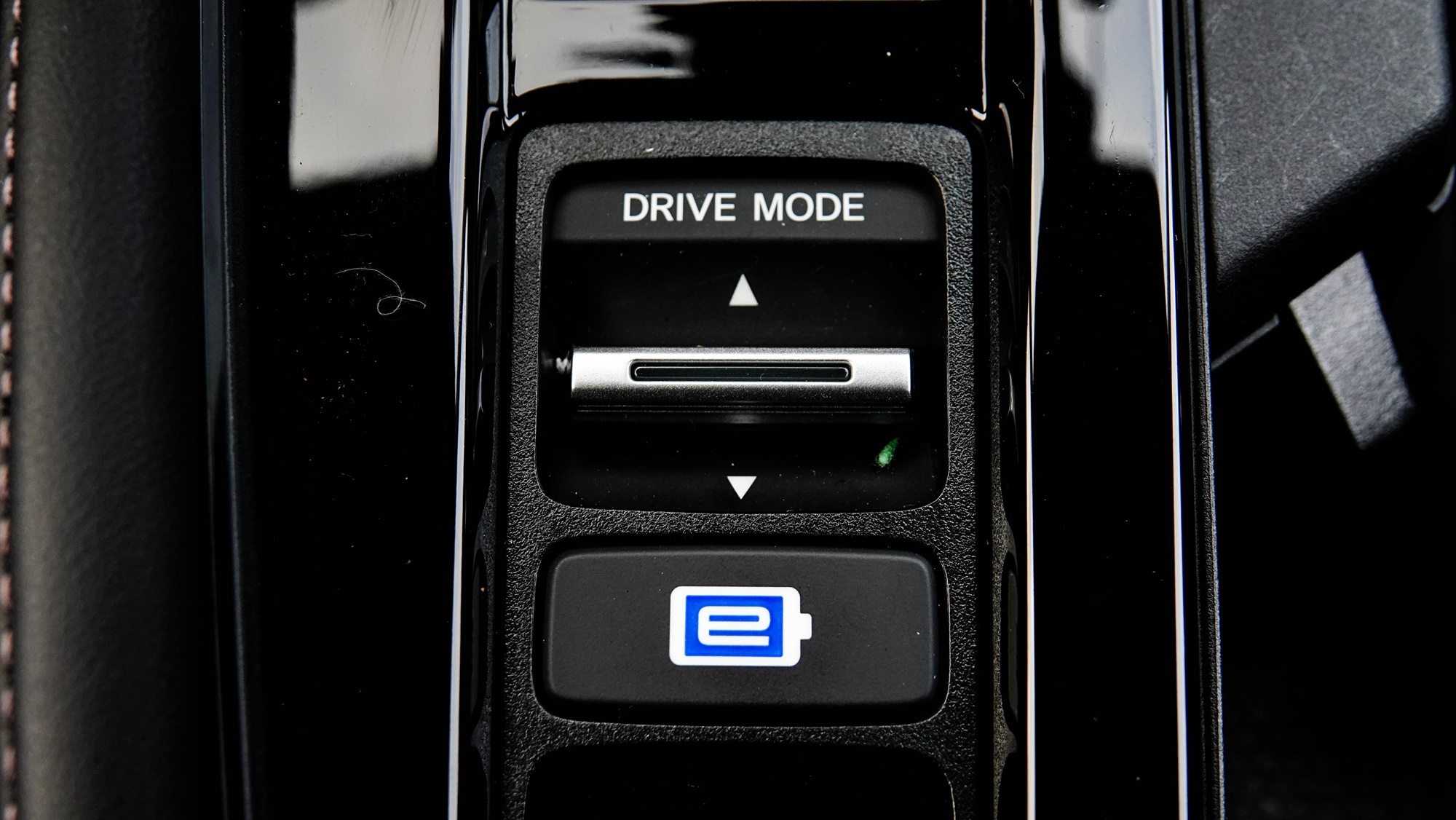
Driving the Accord Hybrid is akin to a mental game. The driver has the autonomy to choose the powertrain. The process of using the ‘e-drive’ button feels like gaming. You can decide whether to run in EV mode or use the engine to recharge the battery while driving. Analyzing the driving conditions to choose between using electricity or gasoline becomes a strategic decision; it requires mental engagement. Going on highways or city roads, seeing the battery’s status, and using the e-drive button shifts the experience of driving into another realm of enjoyment. There is no single answer. Analyzing the car, the road, fuel, battery, and anticipating subsequent situations allows drivers to determine the optimal approach for their vehicle.
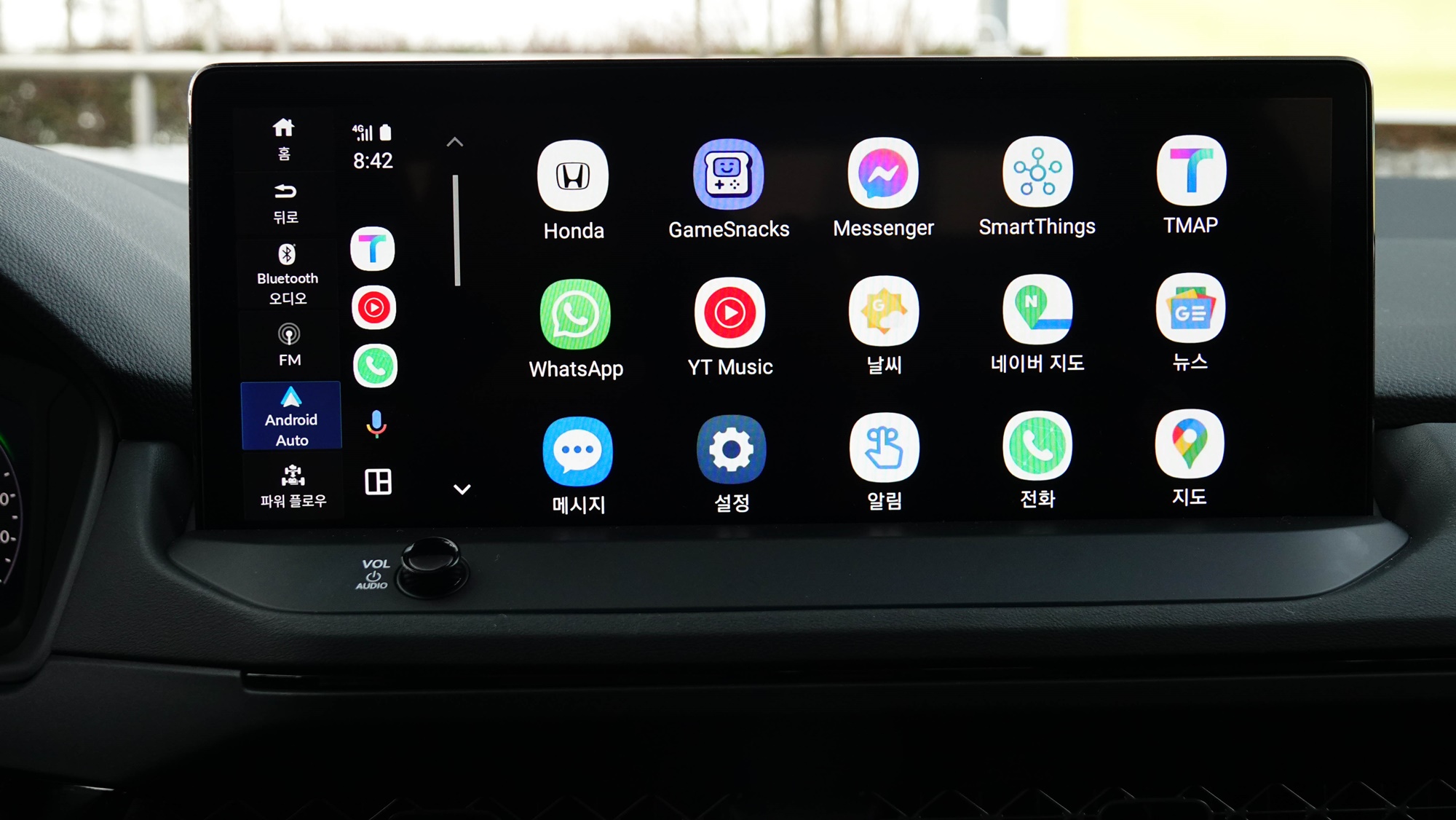
The ‘Honda Sensing’ is Honda’s advanced driving assistance system that helps maintain a safe distance from the vehicle in front and prevents lane departure by intervening with steering. It even features traffic jam assist, making it usable in congested urban roads. Honda Sensing is crucial because it significantly enhances safety. It monitors situations for any lapses or errors from the driver and steps in proactively to correct them. It acts like an unyielding defense line. When it comes to safety, the final bastion consists of ten airbags.
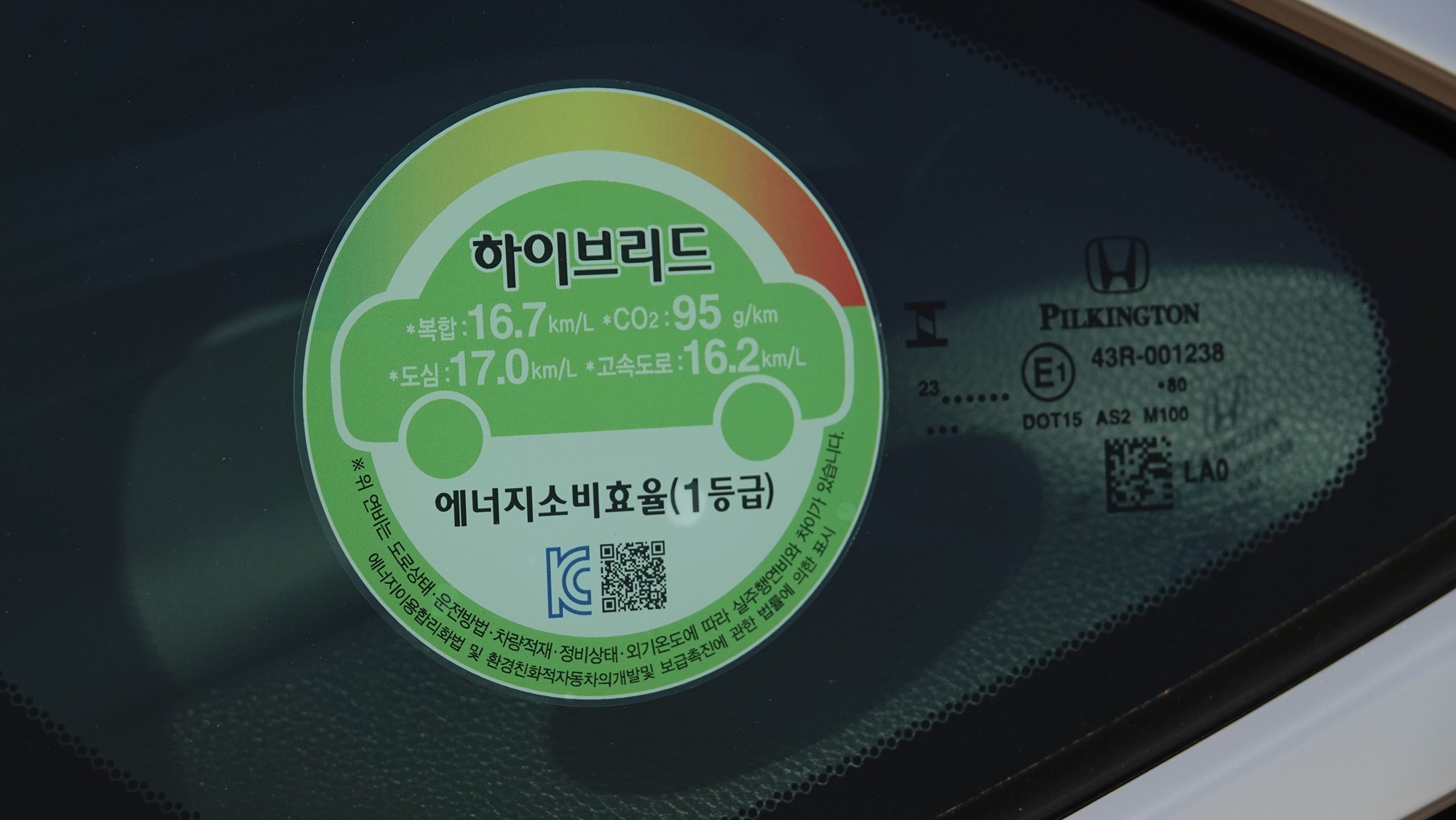
The fuel efficiency is astounding. During a YouTube shoot last March, I confirmed a fuel economy of 31.8km per liter, achieved during an actual drive of 55km from Paju to Seoul in eco mode, demonstrating superb economic driving performance. The official combined fuel economy stands at 16.7km/L, which is already impressive, but to achieve nearly double that is almost unbelievable upon firsthand verification.
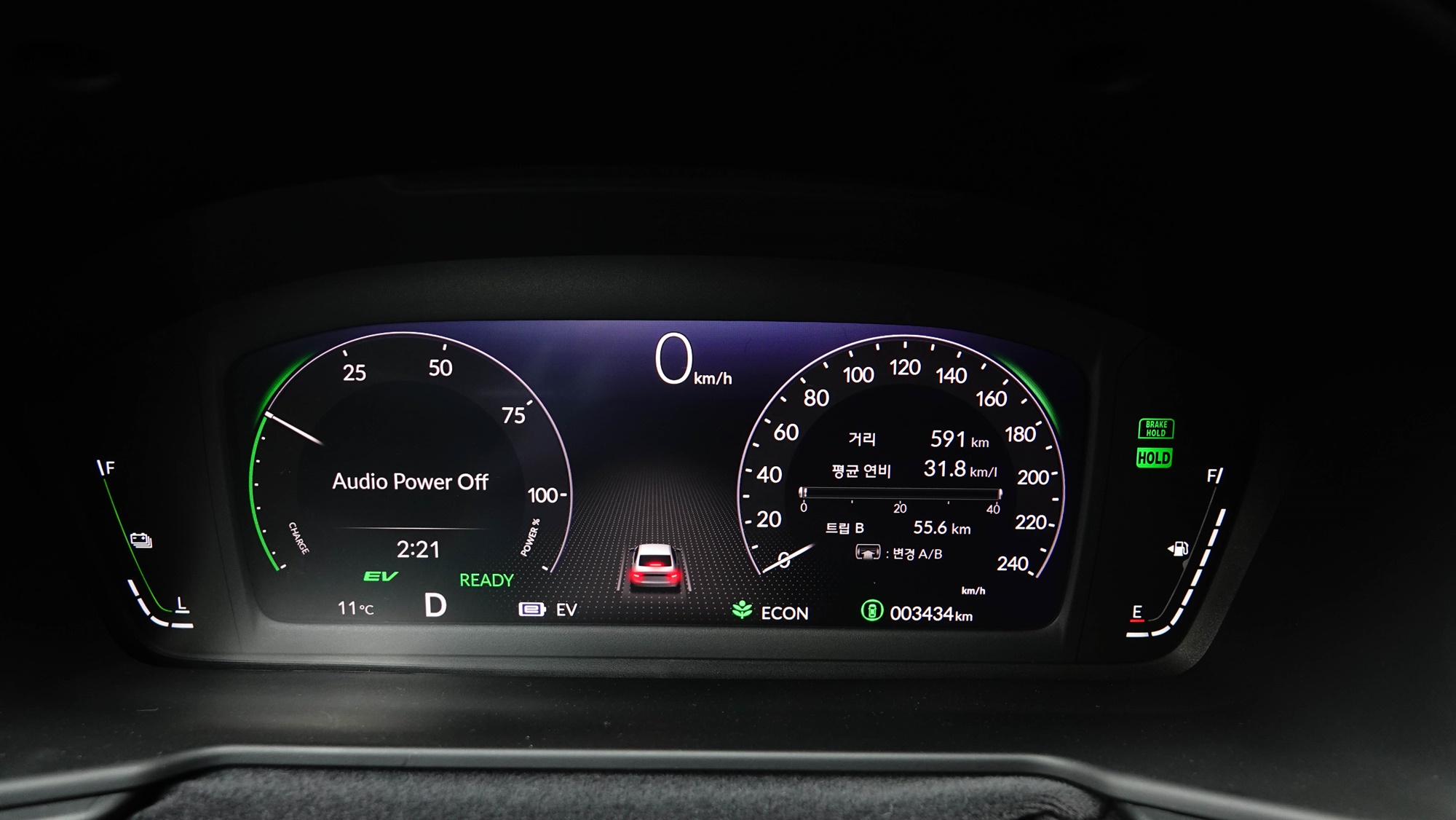
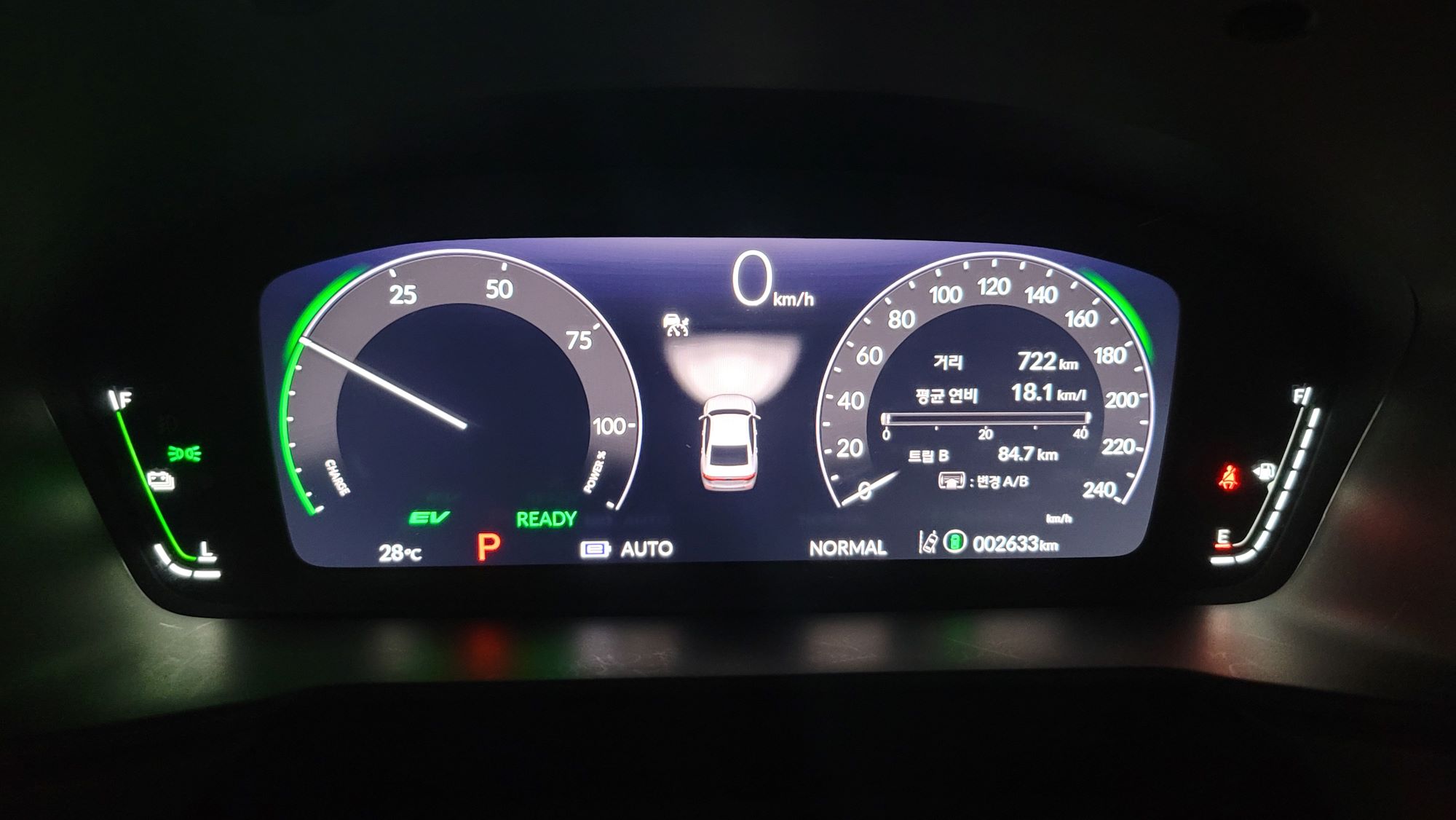
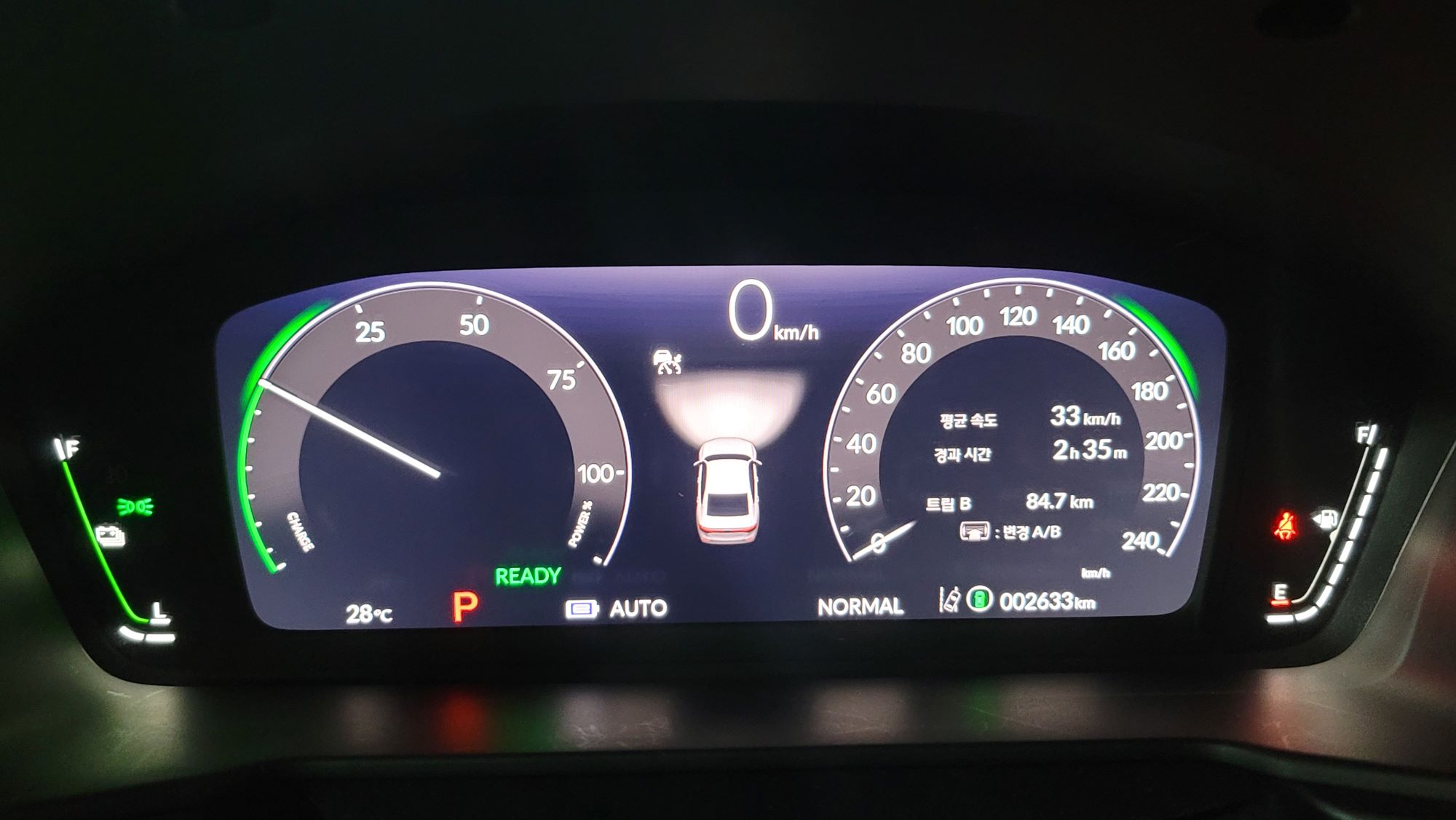
This time, I drove without focusing on fuel efficiency. The drive from Pyeongtaek to Seoul was 84.7 km. Though I primarily used eco mode, I occasionally switched to sports mode for quicker driving. The road was congested, taking 2 hours and 30 minutes to cover 85 km. Arriving in Seoul at 6:30 PM meant navigating through peak evening traffic. The outcome was 18.1 km/L. While that’s far from the 30 km+ per liter mark previously recorded, surpassing the official combined fuel efficiency by 2.4 km per liter is still a significant achievement. One can expect top-notch fuel efficiency without even concentrating on it.
I know several people who have been driving Hondas for over a decade. It’s a testament to their reliability and durability. It’s even become a running joke about how there are no issues with these cars.
The selling price is 53.4 million won. Given today’s exchange rates, which hover around 1,400 won to the dollar, this price feels justifiable. Honda Korea has introduced online sales since last year, allowing potential buyers to check out this model online, get estimates, and even finalize contracts. Subsequent to this process, they are referred to a dealership for vehicle pickup.
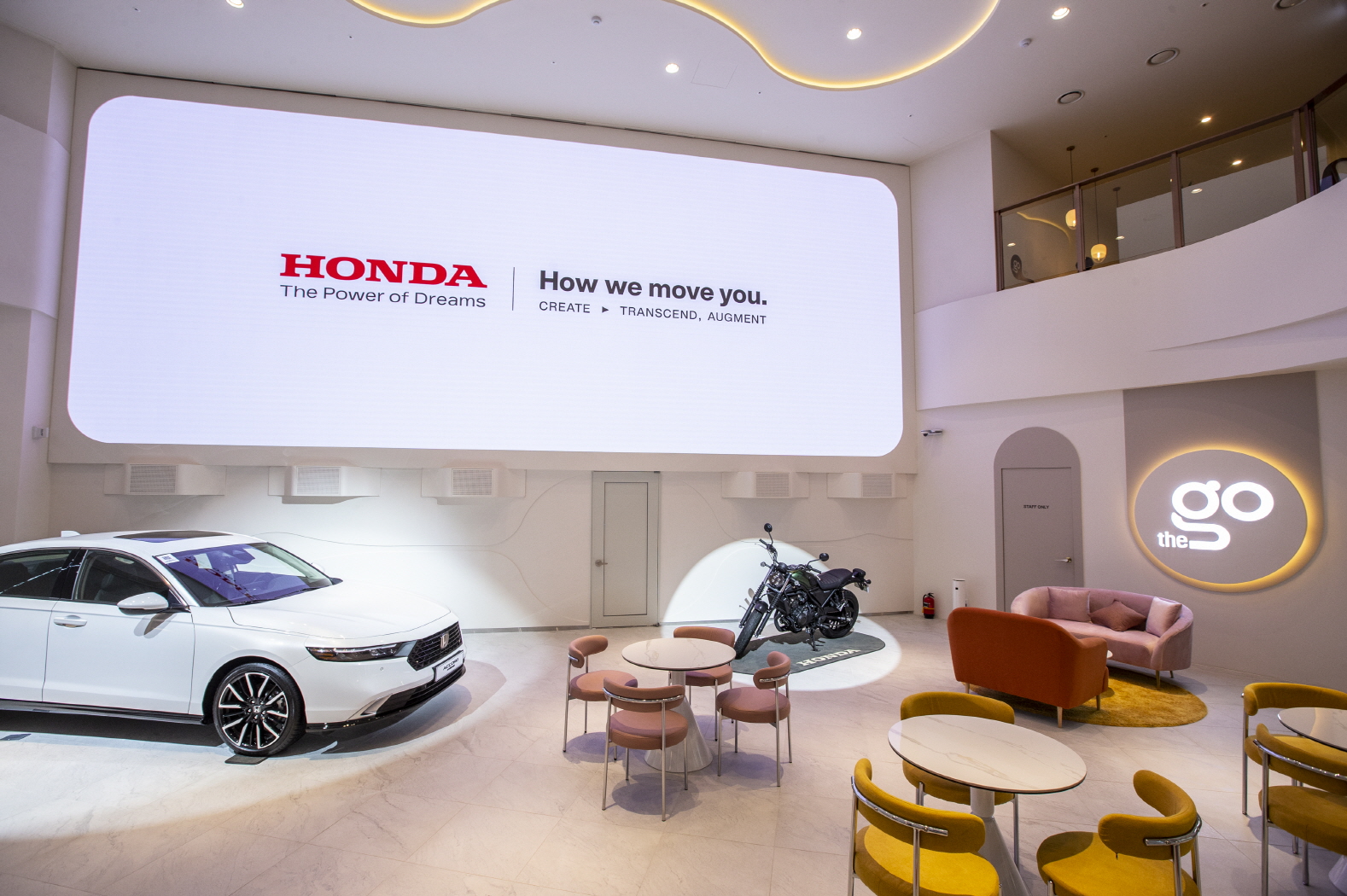
If possible, I recommend taking it for a test drive. You can visit ‘The Go’ café that Honda Korea opened in Bundang. This café doubles as a test drive center. Make a reservation via their website, and you’ll have a unique experience. A curator will sit alongside you and explain the vehicle’s features in detail.
You won’t feel pressured about signing a contract. The curators are passionate experts about cars, so you can acquire a wealth of information. Most importantly, their coffee is exceptional. Enjoying a coffee and a slice of cake after the test drive leaves nothing to be desired.
Summary by Oh Jong-hoon:
For a foreign car in the 50 million won range, it surprisingly doesn’t include built-in navigation. Instead, it requires using a smartphone through wireless integration. You’ll be using Android Auto or Apple CarPlay. Leaving your smartphone behind could be quite troublesome.
Moreover, the exposed metal plate on the trunk lid doesn’t look appealing. A finishing material could add a much more luxurious touch, which is disappointing as it doesn’t require advanced technology or significant costs.
Contact: Oh Jong-hoon, yes@autodiary.kr

